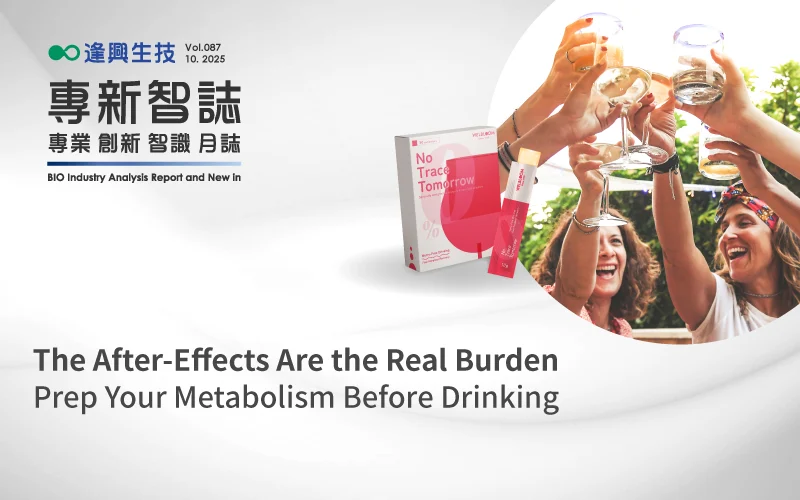
Vol17:The world shrouded by PM2.5. New air pollution control act by Wel-Bloom Bio-Tech Corp.-Part One

[et_pb_section fb_built=”1″ _builder_version=”3.22″ global_colors_info=”{}”][et_pb_row _builder_version=”3.25″ module_alignment=”center” global_colors_info=”{}”][et_pb_column type=”4_4″ _builder_version=”3.25″ custom_padding=”|||” global_colors_info=”{}” custom_padding__hover=”|||”][et_pb_text _builder_version=”3.27.4″ global_colors_info=”{}”]
- Air-pollution effects the world with 9 out of 10 people is unable to breathe fresh air
In recent years air pollution has become one of the highly anticipated environmental issues around the globe, more than 91% of the world’s populations live under an air-polluted environment and 9 out of 10s are breathing toxic air daily.
[/et_pb_text][et_pb_image src=”https://wel-en.wp-mak.ing/wp-content/uploads/vol.017-專新智誌_呼吸道_英_市場-01.webp” align=”center” align_tablet=”center” align_phone=”” align_last_edited=”on|desktop” _builder_version=”3.23″ global_colors_info=”{}”][/et_pb_image][et_pb_text _builder_version=”4.9.4″ global_colors_info=”{}”]
From the “State of Global Air 2019 report” released by Health Effects Institute (HEI) and Institute for Health Metrics and Evaluation, two non-profitable organizations in the U.S have classified air pollutants as ozone (O3), environmental exhaust (or outdoor exhaust), and household exhaust. Environmental exhaust mainly comes from vehicle emissions, thermal power plants, fossil fuels, industrial emissions, and dust. Household emissions are from people burning solid fuels such as coal, wood, charcoal, or fecal sludge and other biomass such as agricultural waste that is usually used for cooking, lighting, or heating. Environmental and household emissions produce ozone, sulfur dioxide, carbon monoxide, and particulate matter such as PM10 and PM2.5 plus with other pollutants. With long-term exposure to high concentrated PM2.5 damages, human health and the hazard rating of PM2.5 in the developing countries are 4~5 times stronger than the developed countries. Ozone is an irritating substance that is harmful to human health and mostly from the chemical substances derived from environmental waste gas (such as nitrogen oxide, volatile organic compounds, etc.) after being exposed to sunlight and under a high-temperature environment, ozone concentration becomes extremely strong.
As pointed out in the latest statistics report by the World Health Organization, air pollution causes mortality to 7 million people worldwide each year and this mostly occurs in developing countries in Asia and Africa, making it the world’s fourth leading cause of death after high blood pressure, dietary related and smoking. Whether exposed to outdoor environments or staying indoors, people may still possibly be affected by air pollution with a mortality rate of approximately 4.2 million from outdoor exhaust pollution each year and 3.8 million from household exhaust pollution. With toxic air clouding over the world, WHO pointed out that 91% of the world’s population live amongst an air polluted environment, which is particularly harmful to children as they are closer to the ground and breathe faster than adults therefore prone to inhaling more pollutants which affects the nervous system and brain development, as well as respiratory systems and immune diseases. Air pollution is a silent public crisis affecting the world. The World Bank’s report “The Cost of Air Pollution (2016)” stated that the cost of global economic loss due to air pollution continues to rise, alone in 2013 the world has to suffer a cost of US$5.11 trillion (approx. NTD153.3 trillion) letting the world having to pay a huge cost due to air pollution.
The mortality rate in Taiwan due to air pollution rises year by year and in 2017 more than 12,000 people have lost their lives due to air pollution. Amongst Taiwan’s top 10 causes of death, Cancer, Stroke, Heart disease, Hypertension and pneumonia, Diabetes, and Chronic lower respiratory disease are correlated with air pollution. Especially during Autumn and Winter, the northeast monsoon blowing smog from China into Taiwan and being captured by the central mountain range, having Taiwan being shrouded under a carpet of smog. Plus power plants, industrial emissions, traffic exhaust, and other pollution sources, during Winter the cold-high pressure leaving Taiwan in a wind-less state that pollutants aren’t able to be overblown but being accumulated amongst in the air, this forth creating a downfall on air quality also having autumn and winter becoming the ideal season where the Taiwanese people starts to experience allergies, asthma, and bronchitis.
Reference resources:
The Cost of Air Pollution: Strengthening the Economic Case for Action
https://openknowledge.worldbank.org/handle/10986/25013
Air pollution
https://www.who.int/health-topics/air-pollution#tab=tab_1
Number of Deaths Attributable to PM2.5
https://www.stateofglobalair.org/data/#/health/plot
[/et_pb_text][et_pb_image src=”https://wel-en.wp-mak.ing/wp-content/uploads/vol.017-專新智誌_呼吸道_英_市場-02.webp” align=”center” align_tablet=”center” align_phone=”” align_last_edited=”on|desktop” _builder_version=”3.23″ global_colors_info=”{}”][/et_pb_image][et_pb_text _builder_version=”4.9.4″ custom_padding=”60px||||false|false” global_colors_info=”{}”]
- PM2.5 within air pollutants, how does a microparticle penetrates and create huge problems to the human body??
The main pollutants within air pollution are the suspended particulate matter that drifts in the air. Particle size that is equal or less than 10 micrometres are called PM10; and ones with particle size equal or less than 2.5 micrometres is known as PM2.5, with a diameter of not more than 1/28 of a strain of hair. A standard PM10 falls to the ground after it’s being raised into the air, but as PM2.5 is too small so it will stay drift within the air and maybe due to wind or rain will then it will be overblown or land onto the ground.The fine suspended particulate matter PM2.5 that drifts in the air adsorbs poisonous matters and with being largely accumulated onto the skin it will infringe epidermal cell, causing ageing, skin allergies and acne. When in contact with the eyes may also cause an allergic reaction leading to hyperemia resulting with conjunctivitis.Due to the tiny particle of PM2.5, the human body’s protective mechanism such as nose hair, cilia, mucus and etc. will not be able to block the particles out when we breathe. As it enters the lung through trachea and bronchus, toxic substances that adhere to the trachea and alveoli are being massively accumulated through a period of time that greatly affects the respiratory tract. Common symptoms shown are coughing, breathing difficulty and allergic reaction. Once breathed into the lungs it affects lung function that triggers asthma, chronic inflammation leading to immunity weakens. In recent years the ratio of respiratory tract allergy and asthma increases due to air pollution.PM2.5 may even cross through the alveoli and enters the blood; with blood being circulated it carries the toxic substances across the human body and most likely causing cardiovascular and cerebrovascular diseases. Toxic substances create thrombus, angiemphraxis, arteriosclerosis and chronic inflammation within the body that triggers hypertension, stroke, heart attack and etc. Besides the toxic substances causing inflammation reaction to the entire body, it induces pathological changes to the liver, pancreas and reproductive system, increases the risk of cancer and diabetes and other chronicle diseases. Therefore amongst the top 10 cause of death in Taiwan, there are 7 causes that are related to air pollution
[/et_pb_text][et_pb_image src=”https://wel-en.wp-mak.ing/wp-content/uploads/vol.017-專新智誌_呼吸道_英_市場-03.webp” align=”center” align_tablet=”center” align_phone=”” align_last_edited=”on|desktop” _builder_version=”3.23″ global_colors_info=”{}”][/et_pb_image][et_pb_text _builder_version=”4.9.4″ global_colors_info=”{}”]
PM2.5 is poisoning the world. With the body can’t further defend itself, the only method is to avoid placing ourselves in a highly contaminated environment to avoid less harm made to the body. Always be updated with the status of outdoor pollutions and avoid going out when the air-pollution level is at the highest. Commune using public transport to reduce emissions and wear a medical protective mask outdoor and wash your hands and face, rinse your mouth, and change into clean clothes once you have returned home. Reduce indoor pollution by not smoking and use cooker hood during cooking and using of air cleaner such. Also, remember to drink lots of water, exercise regularly, and eat lots of dark color vegetables and fruits to strengthen body immunity and this will reduce the harm that PM2.5 does to the body.
Reference resources:
The carcinogenicity of outdoor air pollution
https://www.thelancet.com/journals/lanonc/article/PIIS1470-2045(13)70487-X/fulltext
Air pollution and lung cancer in Europe
https://www.thelancet.com/journals/lanonc/article/PIIS1470-2045(13)70438-8/fulltext
To know more information, Please contact us.
or please send the email to [email protected], and we will serve you with our full attendance.
Reading Part two of Vol17 supplement industry report: Vol17:The world shrouded by PM2.5. New air pollution control act by Wel-Bloom Bio-Tech Corp.-Part two
Reading previous supplement industry report: Vol16 : Global sports fever with it economy taking off!
[/et_pb_text][/et_pb_column][/et_pb_row][/et_pb_section]

Wel-Bloom Bio-Tech
Leader of Jelly Supplement
-
Phone +886-2-33225555
-
Fax +886-2-3322-5966
-
Email [email protected]
-
LINE Official Account @welbloom
-
LinkedIn Welbloom BioTech
Contact Us
We will reply them as soon as possible.


